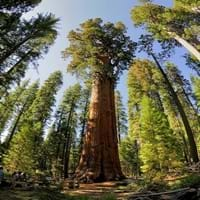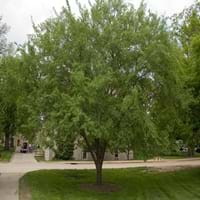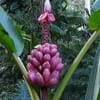Life Span
Perennial
Perennial
Origin
California
Eastern Asia
Types
Blue Iceberg, Cannibal, Muller
Ulmus parvifolia 'Emer II', Ulmus parvifolia 'True Green'
Number of Varieties
Not Available
Habitat
Woodland Garden Canopy
Woodland Garden Canopy
USDA Hardiness Zone
6-9
5-9
Sunset Zone
1a, 1b, 2a, 2b, 3a, 3b, 4, 5, 6, 7, 8, 9, 10, 11, 14, 15, 16, 17, 18, 19, 20, 21, 22, 23, 24
3a, 3b, 4, 5, 6, 7, 8, 9, 10, 11, 12, 13, 14, 15, 16, 17, 18, 19, 20, 21, 22, 23, 24
Habit
Upright/Erect
Upright/Erect
Flower Color
Not Available
Red
Flower Color Modifier
Bicolor
Bicolor
Fruit Color
Brown
Tan, Brown
Leaf Color in Spring
Gray Green
Green
Leaf Color in Summer
Gray Green
Dark Green
Leaf Color in Fall
Gray Green
Yellow, Red, Green
Leaf Color in Winter
Gray Green
Not Available
Leaf Shape
Awl-Shaped
Elliptic, toothed
Plant Season
Spring, Summer, Fall, Winter
Spring, Summer, Fall, Winter
Sunlight
Full Sun, Partial Sun
Full Sun, Partial Sun
Growth Rate
Medium
Not Available
Type of Soil
Clay, Loam, Sand
Loam, Sand
The pH of Soil
Acidic, Neutral
Acidic, Neutral, Alkaline
Soil Drainage
Well drained
Well drained
Bloom Time
Not Available
Fall
Tolerances
Drought
Drought
Where to Plant?
Ground
Ground
How to Plant?
Cuttings, Seedlings
Seedlings
Plant Maintenance
Medium
Medium
Watering Requirements
Requires large amount of water
Average Water Needs
In Summer
Lots of watering
Lots of watering
In Spring
Moderate
Moderate
In Winter
Average Water
Average Water
Soil pH
Acidic, Neutral
Acidic, Neutral, Alkaline
Soil Type
Clay, Loam, Sand
Loam, Sand
Soil Drainage Capacity
Well drained
Well drained
Sun Exposure
Full Sun, Partial Sun
Full Sun, Partial Sun
Pruning
prune to control shape
Remove damaged leaves, Remove dead branches, Remove dead leaves
Fertilizers
Apply 10-10-10 amount
6-12-12 or 5-10-10
Pests and Diseases
Grey mold, Root rot
Canker, Leaf spot, Rots, Wilts
Plant Tolerance
Drought
Drought
Flowers
None
Insignificant
Flower Petal Number
Not Available
Single
Fragrant Bark/Stem
Yes
No
Foliage Texture
Fine
Fine
Foliage Sheen
Glossy
Glossy
Attracts
Chickarees, Sapsuckers, White-headed woodpeckers
Birds
Allergy
Eye irritation, Skin irritation
Moderate Allergen
Aesthetic Uses
Bonsai, Showy Purposes
Bonsai, Showy Purposes
Beauty Benefits
Not Available
Not Available
Environmental Uses
Air purification
Air purification
Medicinal Uses
No Medicinal Use
Antidote, Demulcent, Diuretic, Expectorant, Febrifuge, Hypnotic
Part of Plant Used
Wood
Fruits, Inner Bark, Leaves
Other Uses
Used for making fence posts, Used to make wood shingles
Can be grown in a shelter belt, Used as a thickener in soups
Used As Indoor Plant
Yes
Yes
Used As Outdoor Plant
Yes
Yes
Garden Design
Shade Trees, Street Trees
Container, Feature Plant, Mixed Border, Shade Trees, Street Trees, Topiary / Bonsai / Espalier
Botanical Name
SEQUOIADENDRON giganteum
ULMUS parvifolia
Common Name
Giant Sequoia
Chinese Elm, Lacebark Elm
In Hindi
Giant Sequoia
Lacebark Elm
In German
Giant Sequoia
Lacebark Elm
In French
Séquoia géant
Lacebark Elm
In Spanish
Secoya gigante
Lacebark Elm
In Greek
Giant Sequoia
Lacebark Elm
In Portuguese
Sequoia gigante
Lacebark Elm
In Polish
Giant Sequoia
Lacebark Elm
In Latin
Giant Sequoia
Lacebark Elm
Phylum
Tracheophyta
Magnoliophyta
Class
Pinopsida
Magnoliopsida
Family
Cupressaceae
Ulmaceae
Genus
Sequoiadendron
Ulmus
Clade
Not Available
Angiosperms, Eudicots, Rosids
Subfamily
Sequoioideae
Not Available
Number of Species
Not Available
Not Available
Importance of Giant Sequoia and Lacebark Elm
Want to have the most appropriate plant for your garden? You might want to know the importance of Giant Sequoia and Lacebark Elm. Basically, these two plants vary in many aspects. Compare Giant Sequoia and Lacebark Elm as they differ in many characteristics such as their life, care, benefits, facts, etc. Every gardener must at least have the slightest clue about the plants he wants to plant in his garden. Compare their benefits, which differ in many ways like facts and uses. The medicinal use of Giant Sequoia is No Medicinal Use whereas of Lacebark Elm is Antidote, Demulcent, Diuretic, Expectorant, Febrifuge and Hypnotic. Giant Sequoia has beauty benefits as follows: Not Available while Lacebark Elm has beauty benefits as follows: Not Available.
Compare Facts of Giant Sequoia vs Lacebark Elm
How to choose the best garden plant for your garden depending upon its facts? Here garden plant comparison will help you to solve this query. Compare the facts of Giant Sequoia vs Lacebark Elm and know which one to choose. As garden plants have benefits and other uses, allergy is also a major drawback of plants for some people. Allergic reactions of Giant Sequoia are Eye irritation and Skin irritation whereas of Lacebark Elm have Moderate Allergen respectively. Having a fruit bearing plant in your garden can be a plus point of your garden. Giant Sequoia has no showy fruits and Lacebark Elm has no showy fruits. Also Giant Sequoia is not flowering and Lacebark Elm is not flowering . You can compare Giant Sequoia and Lacebark Elm facts and facts of other plants too.





